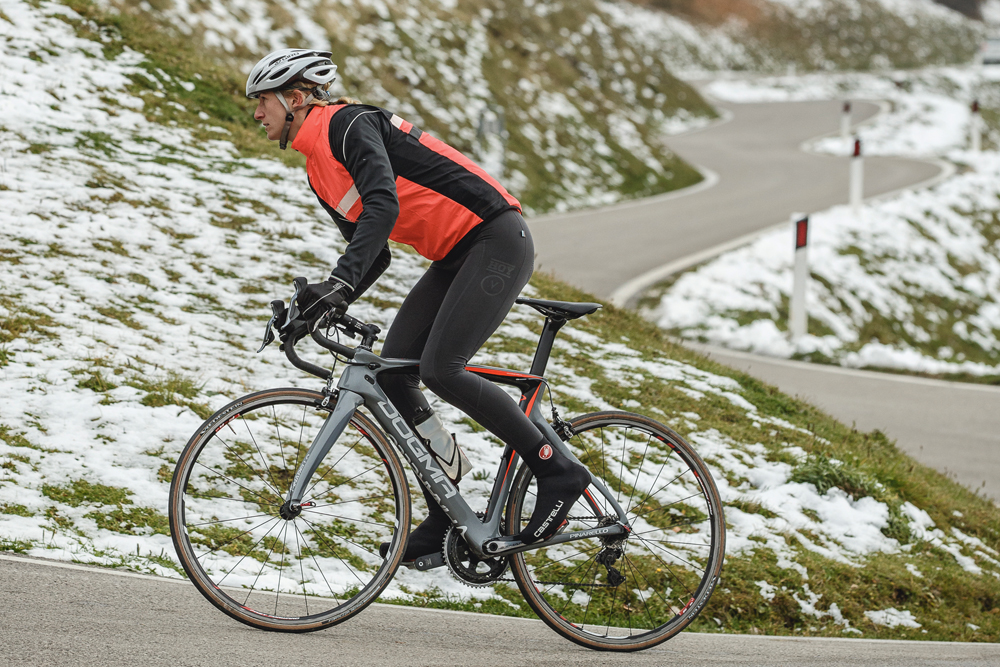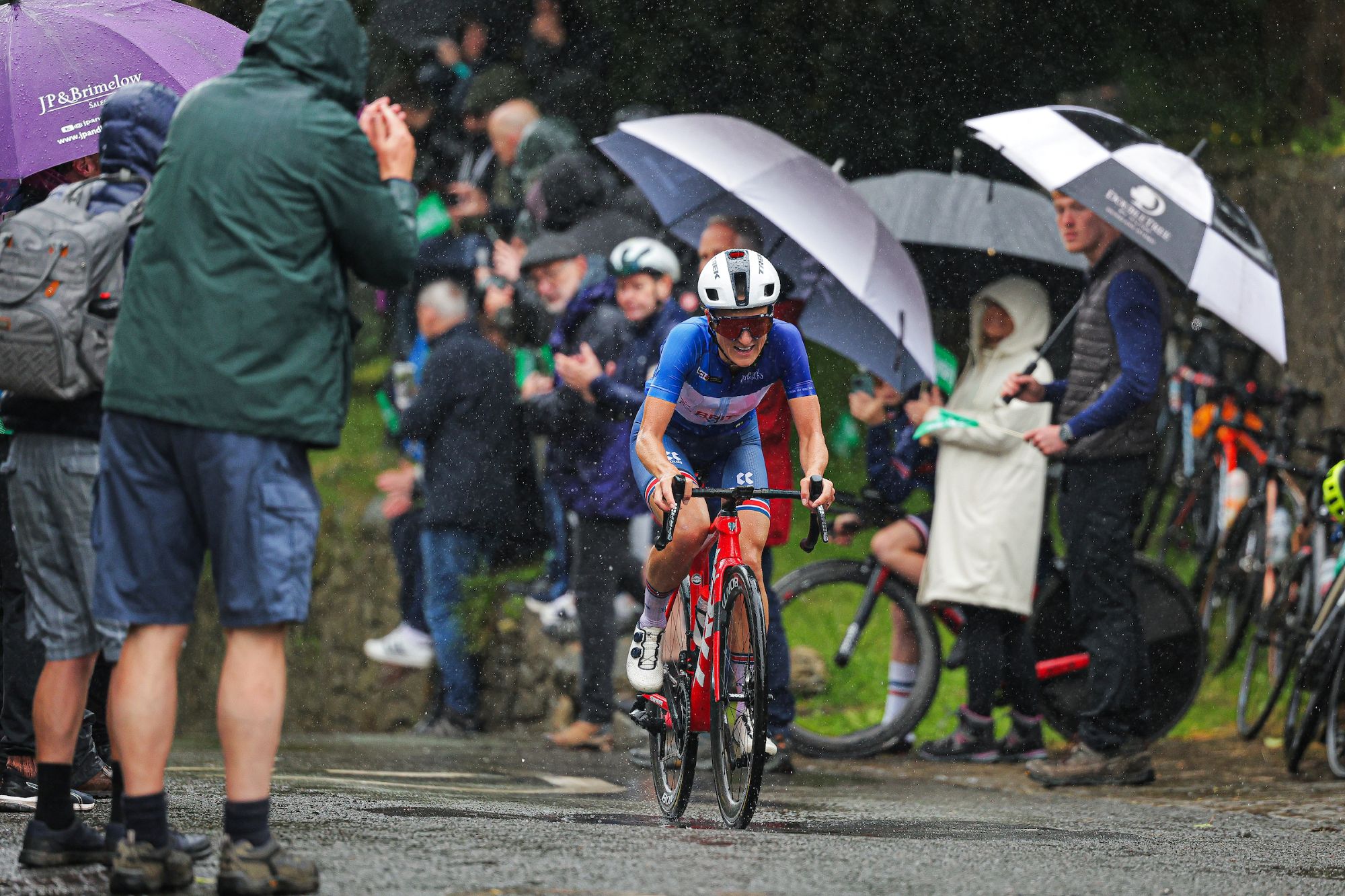Top tips for keeping warm on cold rides
Autumn may have been fairly cyclist-friendly, but winter proper is ready to tighen its grip

Photo: Jesse Wild
Advances in clothing technology have made coping with the cold much easier. With sufficient preparation you should only feel chilly in the most extreme conditions.
Understanding what’s going on in the body can help you overcome the physiological reaction to cold.
Hands and feet are the first to feel the cold due to a process called peripheral vasoconstriction. The body protects the vital organs at its core from cold by narrowing the capillaries in hands and feet to divert blood from the peripheries. Result: chilly fingers and toes.
>>> The best winter cycling gloves (video)
There are two ways to counter this, the first of which is obvious but absolutely vital: wrap up warm, and don’t allow your core temperature to fall. Donning all the kit and then standing around in the cold will hasten vasoconstriction.
>>> Winter cycling survival guide: 10 tips to keep you riding
Secondly, insulate hands and feet, the importance of which can’t be overstated.
Get The Leadout Newsletter
The latest race content, interviews, features, reviews and expert buying guides, direct to your inbox!
It is also important to avoid dampness accumulating on the skin, which can cool and further reduce body temperature.
The essentials
- Prevent loss of core heat by wearing a thermal gilet
- Pay particular attention to keeping hands and feet well insulated
- Don’t allow core temperature to fall by standing around in the cold
- Keep skin dry by wearing fast-wicking base layers
- Eat well to help the body regulate its heat through efficient metabolism
- If you’re shivering, you are too cold; take immediate steps to warm up
Even in winter, a hard effort will produce sweat. It’s arguably more important in cold weather to wear base layers with excellent wicking properties to ensure that moisture is transported away from the skin rapidly.
>>> Five tips to nail the Strava Festive 500
Breathing in cold air can cause a feeling of constriction while riding in winter, owing to what’s called a bronchospasm. Muscles around the lungs’ bronchial airways tighten in reaction to cold air, giving a ‘tight’ sensation similar to an asthma attack.
A snood can help slightly warm the air before it’s breathed in. Some may benefit from using an inhaler in winter, though this obviously requires a discussion with your GP.
>>> Christmas eating: Festive food swaps (video)
Team Sky’s nutritionist suggests using fish oils, shown to reduce bronchial constriction, as a supplement in winter.
Adequate fuelling is even more vital in winter, as the body has the added challenge of maintaining its core temperature, and its mobilisation of energy stores can be compromised. A good breakfast and a steady supply of food on the ride is essential.
Dress right this winter
Dos and Don'ts
Do: protect your core
The body has a narrow band of efficient operating temperatures: within 0.6ºC of 37ºC. If core temperature falls, the body activates defensive measures to protect vital organs.
Keep your core — especially chest and abdomen — in the normal range with a thermal gilet and multiple insulating layers.
Do: cover your head
Although the claim that you can lose more than 40 per cent of body heat through your head has been revealed as a myth, it’s still worth covering your bonce with an insulating thermal layer.
It feels snug, keeps your ears warm and will help keep you warm, albeit not as substantially as once thought.
Do: protect your airways
Cold air may induce a feeling of tightening in the chest, owing to a mild restriction of the airways. Those with exercise-induced asthma may suffer more in winter.
Inhalers that dilate airways can help — discuss with your GP. A scarf or snood can also help.
>>> The best cycling overshoes: a buyer’s guide (video)
Do: insulate extremities
Additional insulation in the form of thick gloves, liners, woolly socks, overshoes, and even a layer of cling-film helps trap heat. In the cold, the body reduces blood-flow to fingers and toes, which has a cooling effect.
Get your bike ready
Don’t: shiver
If you are shivering on a winter ride, it’s time to stop and find somewhere to warm up. Shivering is the body’s last line of defence against the cold.
If you are cold enough to shiver, then concentration, dexterity and coordination may also be affected. Keeping warm is vital for safety as well as comfort.
Don’t: forget your bidon
You may feel the need to pee more often when it’s cold. The brain instructs the kidneys to remove excess water, causing more urination — despite the fact you may need this water later.
Leaving your bidon at home is a definite no-no.

Thank you for reading 20 articles this month* Join now for unlimited access
Enjoy your first month for just £1 / $1 / €1
*Read 5 free articles per month without a subscription

Join now for unlimited access
Try first month for just £1 / $1 / €1
-
 FDJ-Suez, SD Worx-Protime, Lidl-Trek confirmed for Tour of Britain Women as strong list of teams announced
FDJ-Suez, SD Worx-Protime, Lidl-Trek confirmed for Tour of Britain Women as strong list of teams announced18 teams set to take part in four-day WorldTour stage race
By Tom Thewlis
-
 Cyclists could face life sentences for killing pedestrians if new law passed in England and Wales
Cyclists could face life sentences for killing pedestrians if new law passed in England and WalesReckless cycling currently carries a maximum two-year jail term
By Tom Thewlis